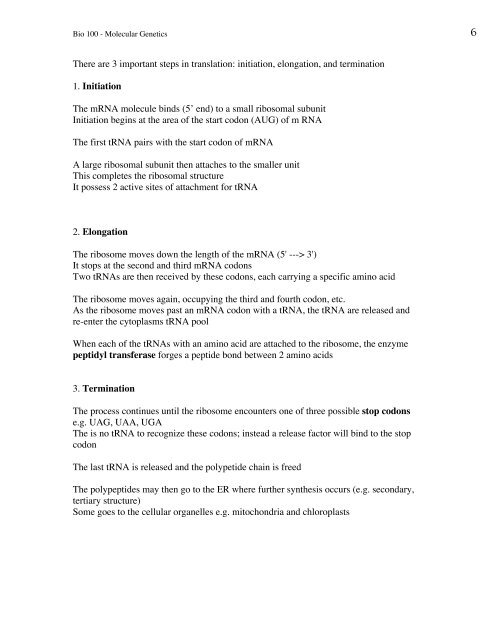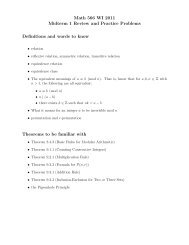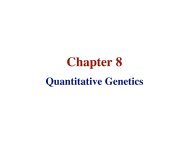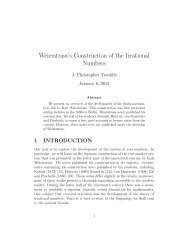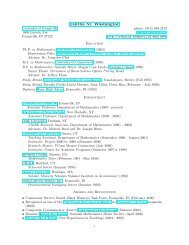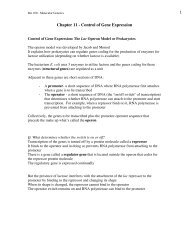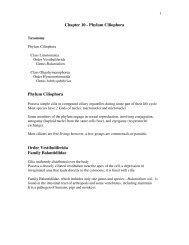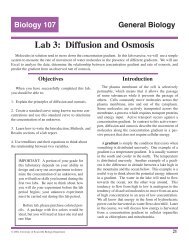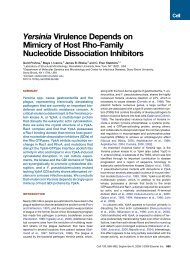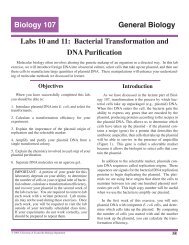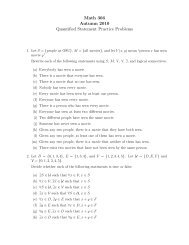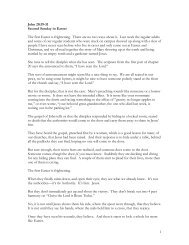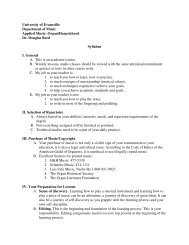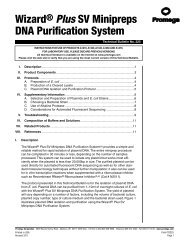Chapter 10 - Molecular Biology of the Gene
Chapter 10 - Molecular Biology of the Gene
Chapter 10 - Molecular Biology of the Gene
Create successful ePaper yourself
Turn your PDF publications into a flip-book with our unique Google optimized e-Paper software.
Bio <strong>10</strong>0 - <strong>Molecular</strong> <strong>Gene</strong>tics 6There are 3 important steps in translation: initiation, elongation, and termination1. InitiationThe mRNA molecule binds (5’ end) to a small ribosomal subunitInitiation begins at <strong>the</strong> area <strong>of</strong> <strong>the</strong> start codon (AUG) <strong>of</strong> m RNAThe first tRNA pairs with <strong>the</strong> start codon <strong>of</strong> mRNAA large ribosomal subunit <strong>the</strong>n attaches to <strong>the</strong> smaller unitThis completes <strong>the</strong> ribosomal structureIt possess 2 active sites <strong>of</strong> attachment for tRNA2. ElongationThe ribosome moves down <strong>the</strong> length <strong>of</strong> <strong>the</strong> mRNA (5' ---> 3')It stops at <strong>the</strong> second and third mRNA codonsTwo tRNAs are <strong>the</strong>n received by <strong>the</strong>se codons, each carrying a specific amino acidThe ribosome moves again, occupying <strong>the</strong> third and fourth codon, etc.As <strong>the</strong> ribosome moves past an mRNA codon with a tRNA, <strong>the</strong> tRNA are released andre-enter <strong>the</strong> cytoplasms tRNA poolWhen each <strong>of</strong> <strong>the</strong> tRNAs with an amino acid are attached to <strong>the</strong> ribosome, <strong>the</strong> enzymepeptidyl transferase forges a peptide bond between 2 amino acids3. TerminationThe process continues until <strong>the</strong> ribosome encounters one <strong>of</strong> three possible stop codonse.g. UAG, UAA, UGAThe is no tRNA to recognize <strong>the</strong>se codons; instead a release factor will bind to <strong>the</strong> stopcodonThe last tRNA is released and <strong>the</strong> polypetide chain is freedThe polypeptides may <strong>the</strong>n go to <strong>the</strong> ER where fur<strong>the</strong>r syn<strong>the</strong>sis occurs (e.g. secondary,tertiary structure)Some goes to <strong>the</strong> cellular organelles e.g. mitochondria and chloroplasts


